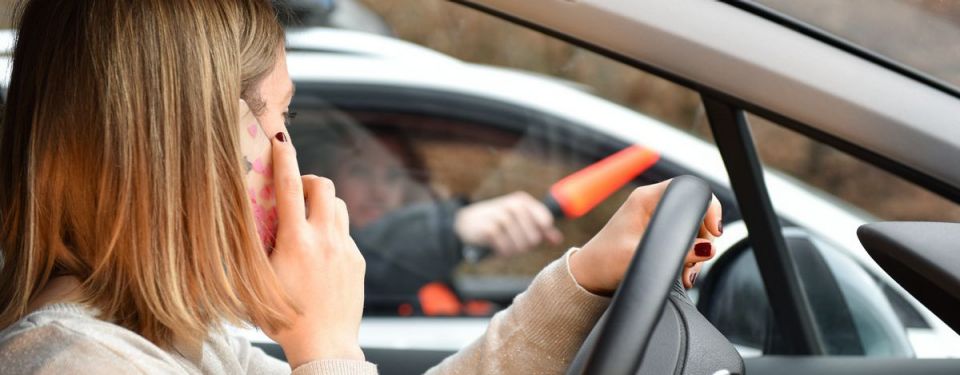
Almost one accident in 10 involves the use of a telephone while at the wheel. Sending messages, but also using apps or social media seriously affect a driver's attention.
The smartphone is the only device that involves all four sources of distraction that can divert a driver's attention:
- Auditory: your attention is diverted by something you hear.
- Visual: your attention is diverted by something you see.
- Manual: your attention is diverted by what you are doing.
- Cognitive: your attention is diverted by thinking.
Risks of using a smartphone while driving:
- Telephoning while at the wheel multiplies the risk of an accident by 3, reading or writing a message by 23.
- Sending a message diverts a driver's attention for 5 seconds.
- While you are looking at your phone for 2 seconds at 130 km/h you will have travelled 150 m.
However, smartphones are not the only thing that can distract drivers. That being the case, follow this advice:
- Concentrate on the road, even in a traffic jam.
- Avoid doing anything else but driving.
- Set your radio and satnav before you set off.
- Be aware that even conversation with passengers is a source of distraction.
- Avoid eating and drinking while you are driving.
- Remember and take account of the fact that other road users can be distracted.
- If you find that you are having difficulty concentrating on the road, stop and have a break.
Distraction for pedestrians
Using a smartphone not only has a negative influence on the behaviour of drivers, but also on the attention of other road users. While on the phone, pedestrians risk misinterpreting their surroundings and not taking the time to analyse a dangerous situation, particularly when crossing the road. In this context, follow the advice below:
- Don't let familiar surroundings fool you into crossing a road without paying attention.
- Take into account the speed and distance of approaching vehicles. Make sure you are seen by motorists before crossing the road.
- Be aware that you do not have absolute priority at pedestrian crossings, but make sure that it is safe to enter the carriageway.
- Only cross the road when the lights are green and do not turn around when the lights are red.
- Make it clear that you intend to cross the road (possibly by waving) and make sure that all road users understand your intention.


